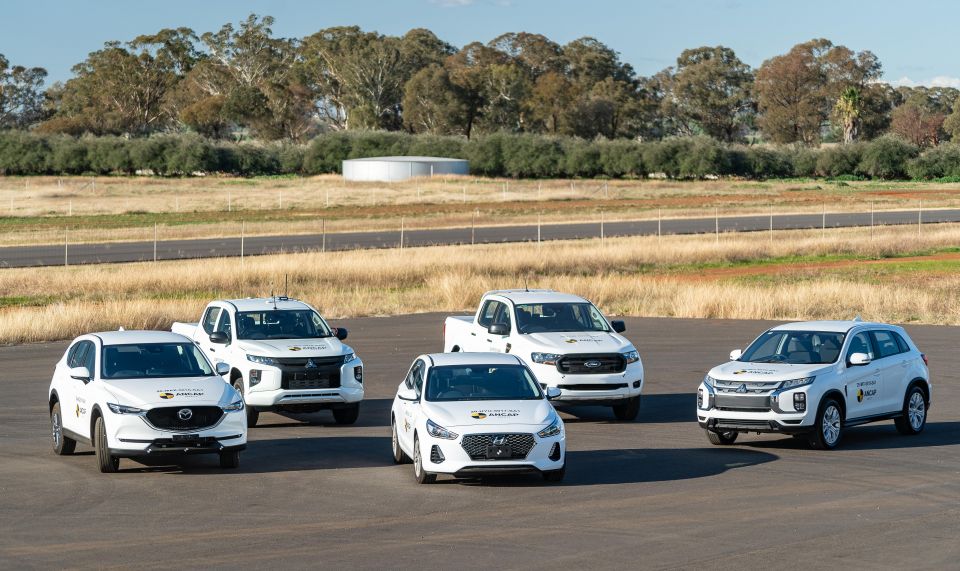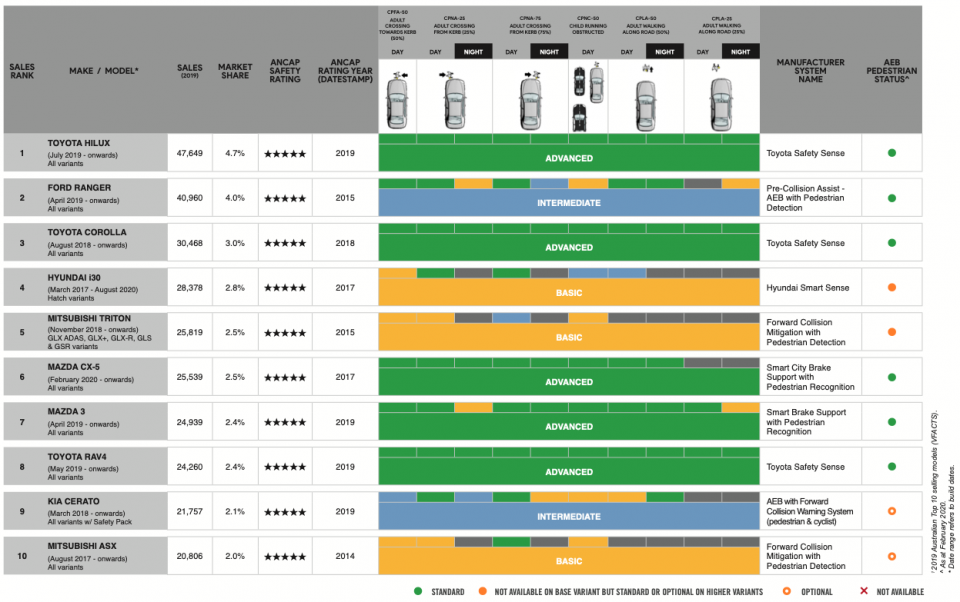

Max Davies
How Audi, BMW, Honda, Mercedes-Benz, and Suzuki started out in Australia, and where they are now
2 Hours Ago
Autonomous emergency braking is a lifesaver, both for occupants and pedestrians. Here's how the 10 best-selling cars in Australia last year stack up.

Contributor


Contributor
Australia’s independent crash testing body, ANCAP, has laid out how the autonomous emergency braking systems on the 10 best-selling cars of 2019 stack up.
The body is currently running a campaign pushing the benefits of autonomous emergency braking (AEB) technology, which slams on the brakes if it detects a collision to prevent the crash or mitigate the damage if an accident is unavoidable.
An AEB system with pedestrian detection is now required to achieve a five-star ANCAP rating – but cars crash tested before 2018 didn’t have their AEB performance rated, as it wasn’t part of previous testing criteria.
ANCAP has re-tested cars without an AEB rating from their initial test, and bundled their pedestrian detection capabilities into three categories: Advanced, Intermediate, and Basic.
The AEB ratings are based on the following tests:
Their performance is laid out in the table below:

“While it’s not possible for ANCAP to re-test each make and model against updated rating criteria each year, to assist consumers we’ve focused on Australia’s most popular selling models to see how they each perform when it comes to avoiding or minimising impacts with some of our most vulnerable road users: pedestrians,” said ANCAP director for communications and advocacy, Rhianne Robson.
“ANCAP has been encouraging the fitment of AEB systems for many years, and through our influence, vehicle manufacturers have done very well to voluntarily equip their vehicles with AEB technology ahead of regulation.”
A new Government proposal would have Australian Design Rules (ADR) introduced mandating all new vehicle models introduced after July 2022 have the potentially life-saving technology – which automatically slams on the brakes if it detects an impending rear-end crash – as standard.
All models on sale from July 2024 would need to feature the technology, in keeping with European regulations.
Although AEB capable of detecting pedestrians is necessary to earn a five-star rating with independent crash-testing body ANCAP, it’s not a legal requirement for carmakers in Australia.

According to ANCAP:
However, the average age of cars on Australian roads is 10 years. ANCAP says just 6.0 per cent of passenger cars on the road today likely has AEB fitted.
“What we want to do through the rollout of this campaign is drive community awareness of the availability, function and benefits of vehicles fitted with these safety systems, and encourage consumer uptake of newer vehicles with these collision avoidance features to help save lives,” Mrs Robson added.
“We’re encouraging all motorists to check whether the car they currently drive, or looking to buy, is fitted with AEB or LSS through a simple search tool now available on the ANCAP website.”
Scott Collie is an automotive journalist based in Melbourne, Australia. Scott studied journalism at RMIT University and, after a lifelong obsession with everything automotive, started covering the car industry shortly afterwards. He has a passion for travel, and is an avid Melbourne Demons supporter.


Max Davies
2 Hours Ago


William Stopford
2 Hours Ago


Derek Fung
3 Hours Ago


Max Davies
10 Hours Ago


William Stopford
1 Day Ago


Ben Zachariah
1 Day Ago